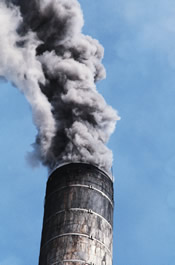
EPA alleges that the refinery made modifications to its facility that increased emissions without first obtaining pre-construction permits and installing required pollution control equipment.
Under the CAA, major sources of air pollution, like refineries, have to obtain such permits before making changes that would result in a significant emissions increase of any pollutant.
The penalty also resolves claims that the company failed to timely notify state and local emergency responders of releases of hydrogen sulfide and sulfur dioxide from the refinery, as required by the CERCLA and EPCRA.
What records must be kept on hand and for how long? Find out now with our Free Special Report, Recordkeeping for EHS Managers. Also receive 2 trial issues of BLR’s Environmental Manager’s Compliance Advisor! Download Your Free Report
EPA’s Eagle Eye on Refiners
EPA’s currently working under a major initiative to improve compliance among petroleum refiners and to reduce air pollution from refineries nationwide through comprehensive, company-wide settlements. The first of EPA’s settlements was reached in 2000, and since then, 107 refineries operating in 32 states and territories are under judicially enforceable agreements to significantly reduce emissions of pollutants. That’s more than 90 percent of the total refining capacity in the United States!
Air Permits Are Tricky
Air emissions permits are divided into two distinct categories–construction permits and operating permits.
The applicability of various permitting programs within each category is dependent on
- The type and quantity of the pollutants emitted
- The attainment status of the area where the source is located, and,
- The date the source was constructed or modified.
The quantity of emissions from a source will determine whether the source can be classified as a major source or if changes at the source can be classified as a major modification. Major sources must comply with federal construction and operating permit programs, most of which are administered at the state or local level.
Comply with OSHA and EPA recordkeeping requirements with our free report: Recordkeeping for EHS Managers. Also receive 2 free trial issues of BLR’s Environmental Manager’s Compliance Advisor! Download Your Free Report
3Construction Permits
New major sources and major modifications to existing major sources must comply with the provisions of the NSR program. Applicable sources in nonattainment areas must comply with nonattainment NSR provisions, while PSD provisions apply to sources in attainment areas. It is possible for a single source to be subject to both nonattainment NSR and PSD for different pollutants.
New sources and modifications to existing sources may also be required to comply with an NSPS. NSPS applies to specifically listed categories of sources that are constructed or modified after specific dates listed within the standards.
Operating Permits
Major sources are also required to obtain operating permits under the Title V program. A Title V operating permit is intended to be a facilitywide operating permit that consolidates all the applicable requirements for all the sources located at a facility into a single document. Title V operating permits may incorporate the provisions of many regulatory programs, such as:
- Acid Rain Program.
- NOx Budget Program.
- NSPS.
- National Emissions Standards for Hazardous Air Pollutants (NESHAP), including Maximum Achievable Control Technology (MACT) standards.
- CAM.
- Risk Management Program.
- State regulatory programs.
See tomorrow’s Advisor for the dos and don’ts of air permitting.
